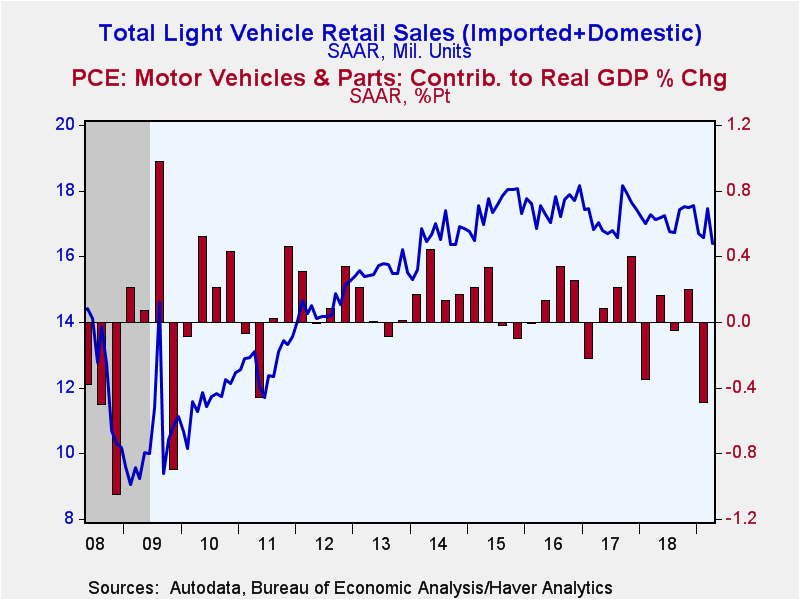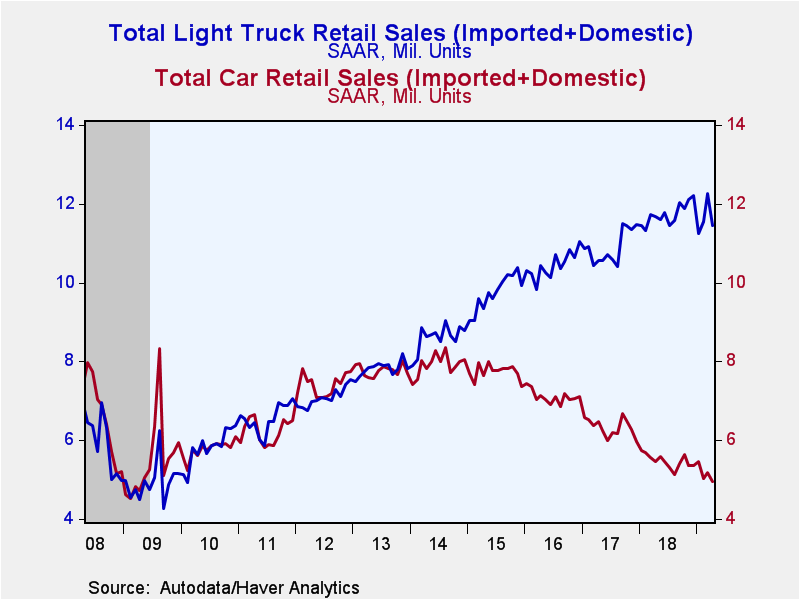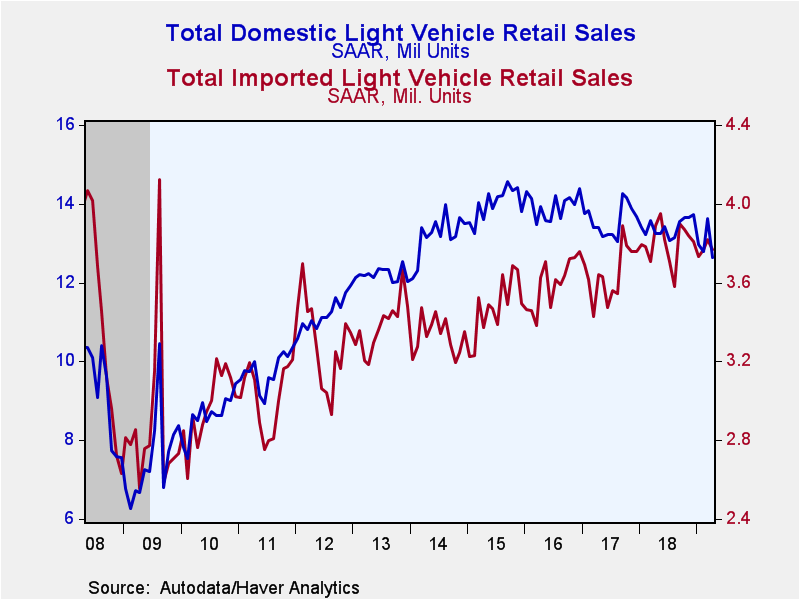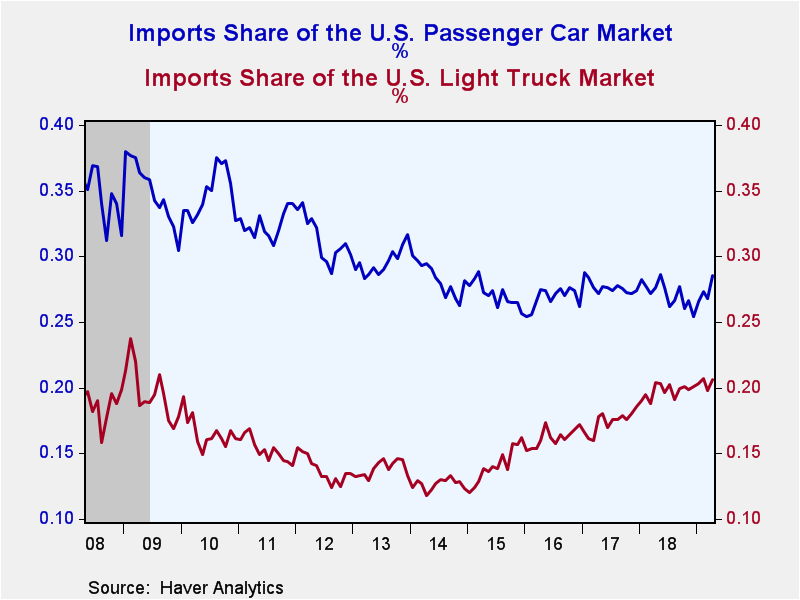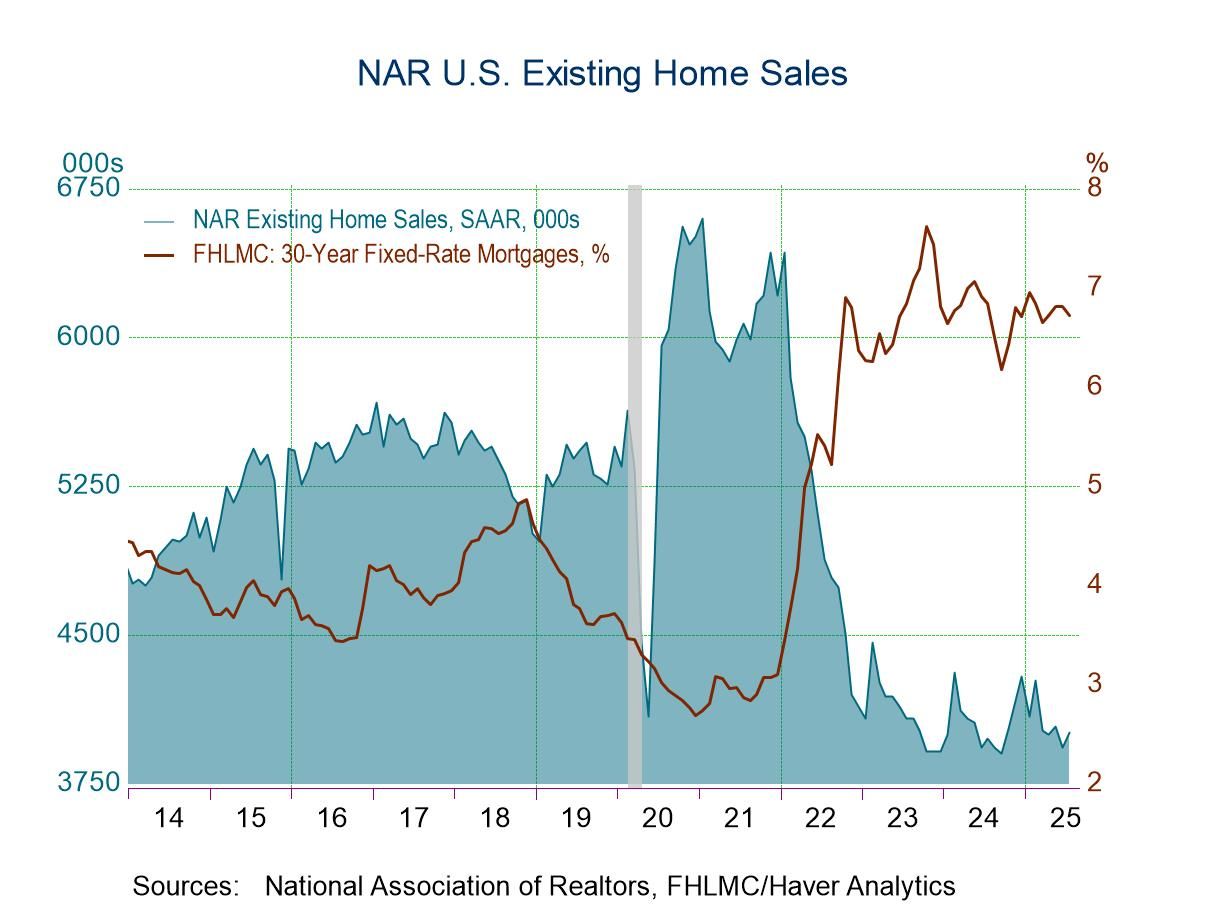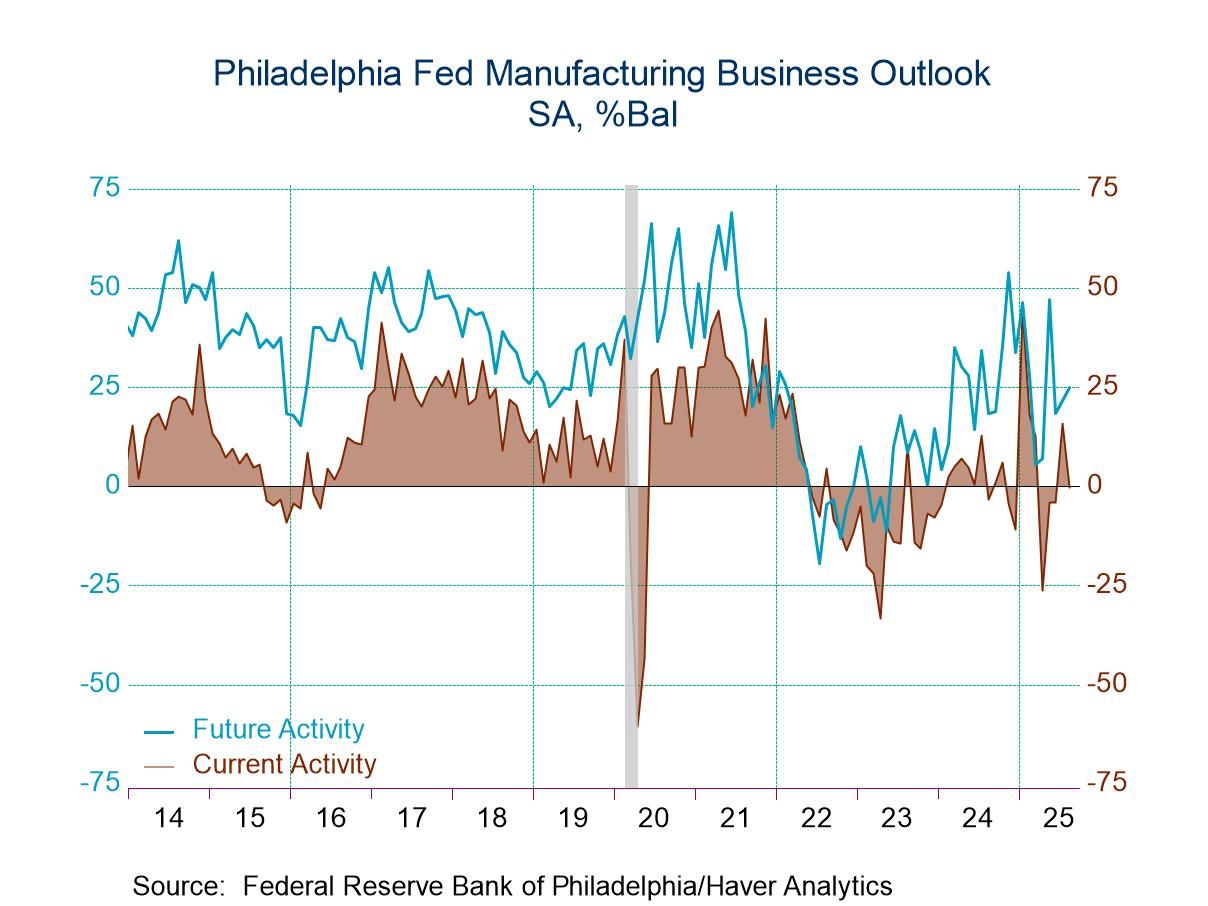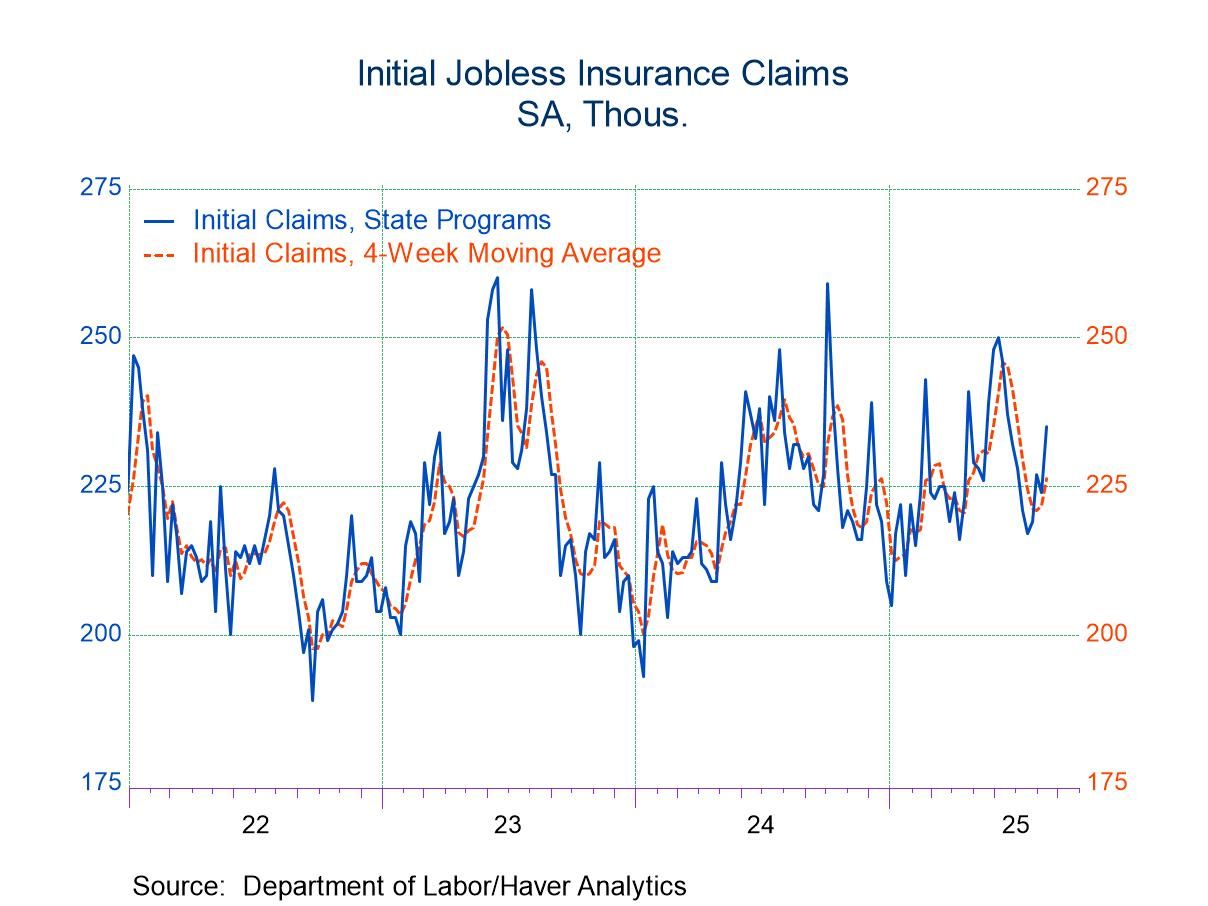 Global| May 01 2019
Global| May 01 2019U.S. Light Vehicle Sales Turn Sharply Downward
by:Tom Moeller
|in:Economy in Brief
Summary
The motor vehicle weakened significantly last month. The Autodata Corporation reported that sales of light vehicles during April declined 6.1% (-4.3% y/y) to 16.39 million units (SAAR). It reversed a 5.3% March increase and left sales [...]
The motor vehicle weakened significantly last month. The Autodata Corporation reported that sales of light vehicles during April declined 6.1% (-4.3% y/y) to 16.39 million units (SAAR). It reversed a 5.3% March increase and left sales at the lowest level since October 2014.
Auto sales fell 4.8% (-9.7% y/y) to a 4.94 million unit pace following a 3.4% increase. It continued the downward trend in place since 2014. Purchases of domestically-produced cars were off 7.1% (-10.8% y/y) to 3.53 million units after rising 4.1% in March. Sales of imported cars improved 1.4% (-6.7% y/y) for a second month to 1.41 million units.
Light-truck sales weakened 6.5% (-1.8% y/y) last month to an 11.46 million unit rate and reversed the 6.1% March gain. They remained, however, in the upward trend in place since the recession's end. Purchases of domestically-made light trucks fell 7.4% to 9.10 million units (-2.0% y/y). The decline fully reversed the prior month's increase. Sales of imported light trucks eased 2.9% (-0.7% y/y) to a 2.36 million sales rate after a 1.7% rise and continued to gain share of the truck market.
Trucks' share of the U.S. vehicle market was little changed near the record high at 69.9%. The share rose from 68.3% last year and a low of 47.3% in 2009.
Imports share of the U.S. vehicle market rose last month to 23.0% and has been trending upward since 2015. Imports' share of the passenger car market increased to 28.5%, an 11-month high. Imports share of the light truck market improved to 20.6%, up from a low of 13.8% in 2012.
U.S. vehicle sales figures can be found in Haver's USECON database. Additional detail by manufacturer is in the INDUSTRY database.
| Light Weight Vehicle Sales (SAAR, Million Units) | Apr | Mar | Feb | Apr Y/Y % | 2018 | 2017 | 2016 |
|---|---|---|---|---|---|---|---|
| Total | 16.39 | 17.45 | 16.57 | -4.3 | 17.21 | 17.23 | 17.55 |
| Autos | 4.94 | 5.19 | 5.02 | -9.7 | 5.48 | 6.33 | 7.10 |
| Domestic | 3.53 | 3.80 | 3.65 | -10.8 | 3.99 | 4.58 | 5.20 |
| Imported | 1.41 | 1.39 | 1.37 | -6.7 | 1.49 | 1.75 | 1.90 |
| Light Trucks | 11.46 | 12.26 | 11.55 | -1.8 | 11.74 | 10.90 | 10.44 |
| Domestic | 9.10 | 9.83 | 9.15 | -2.0 | 9.42 | 9.00 | 8.75 |
| Imported | 2.36 | 2.43 | 2.39 | -0.7 | 2.32 | 1.90 | 1.69 |
Tom Moeller
AuthorMore in Author Profile »Prior to joining Haver Analytics in 2000, Mr. Moeller worked as the Economist at Chancellor Capital Management from 1985 to 1999. There, he developed comprehensive economic forecasts and interpreted economic data for equity and fixed income portfolio managers. Also at Chancellor, Mr. Moeller worked as an equity analyst and was responsible for researching and rating companies in the economically sensitive automobile and housing industries for investment in Chancellor’s equity portfolio. Prior to joining Chancellor, Mr. Moeller was an Economist at Citibank from 1979 to 1984. He also analyzed pricing behavior in the metals industry for the Council on Wage and Price Stability in Washington, D.C. In 1999, Mr. Moeller received the award for most accurate forecast from the Forecasters' Club of New York. From 1990 to 1992 he was President of the New York Association for Business Economists. Mr. Moeller earned an M.B.A. in Finance from Fordham University, where he graduated in 1987. He holds a Bachelor of Arts in Economics from George Washington University.


